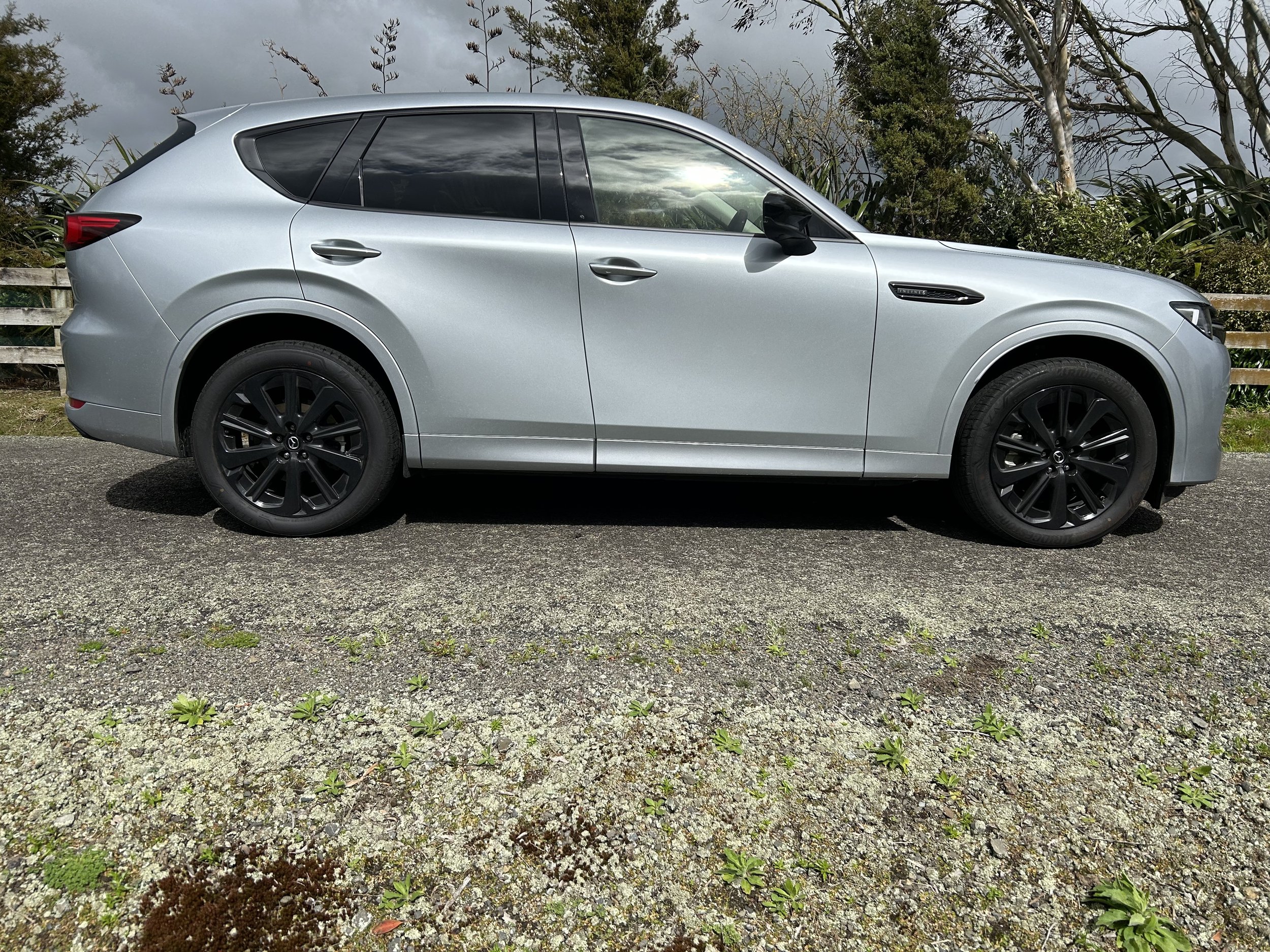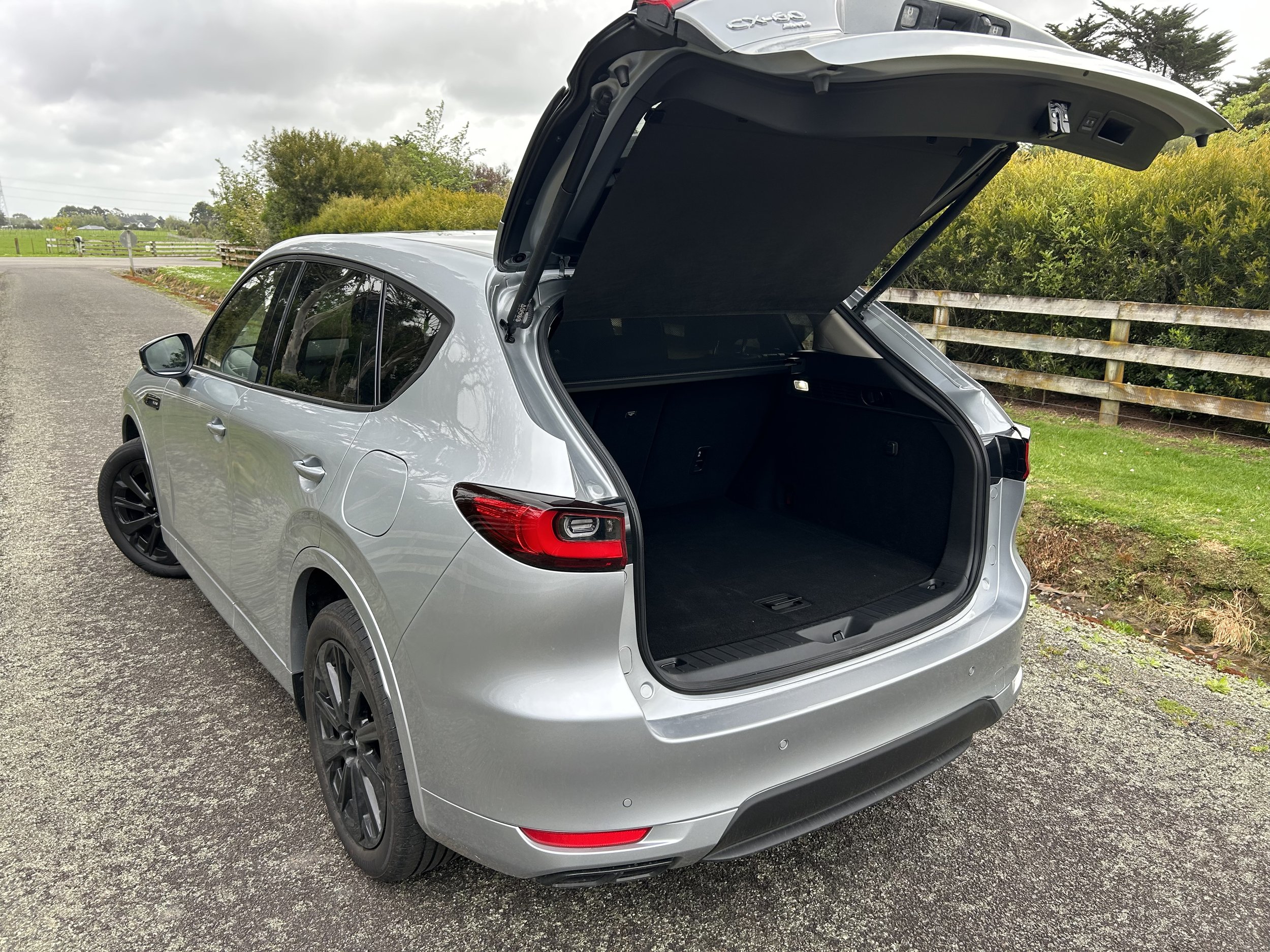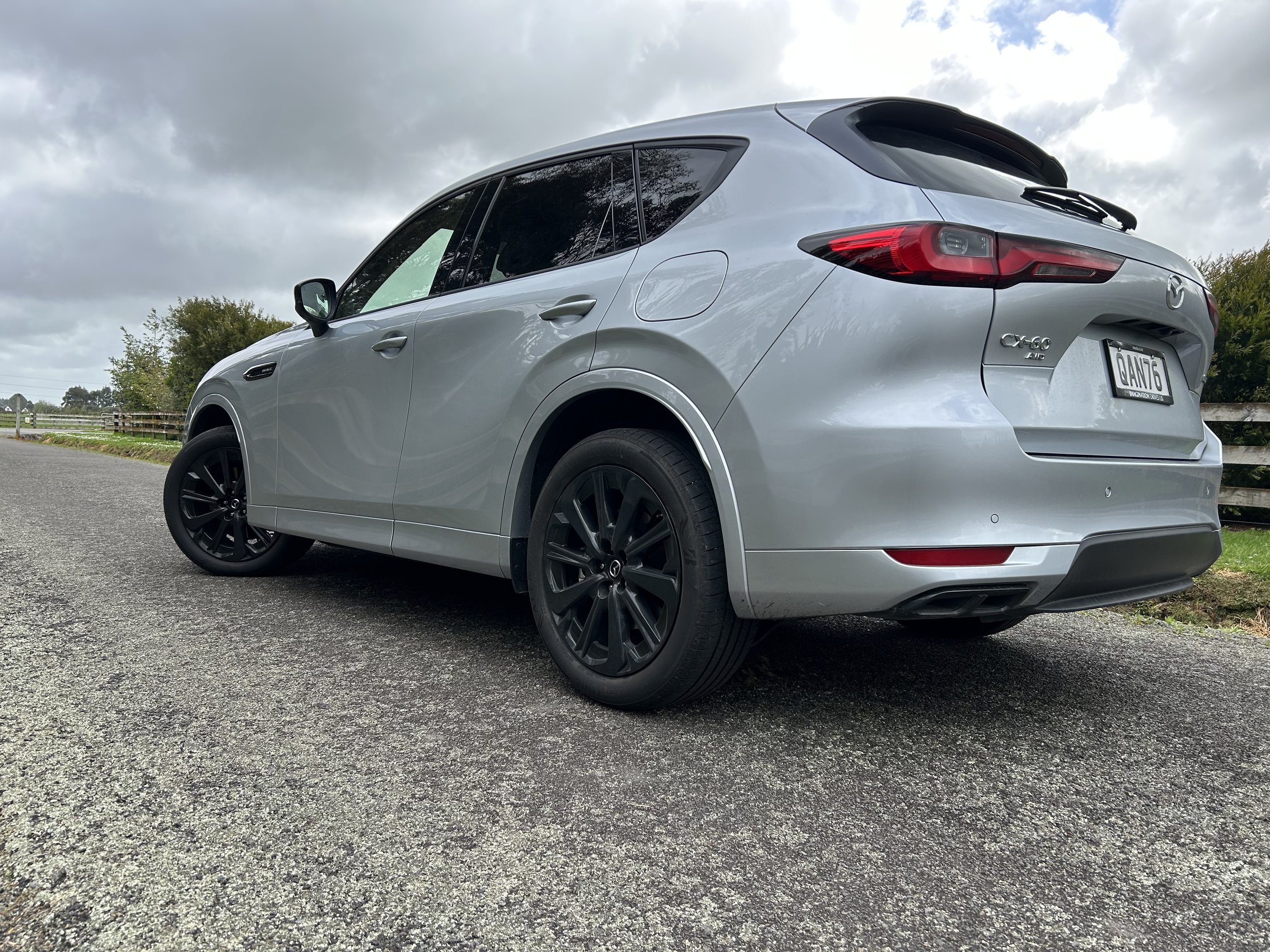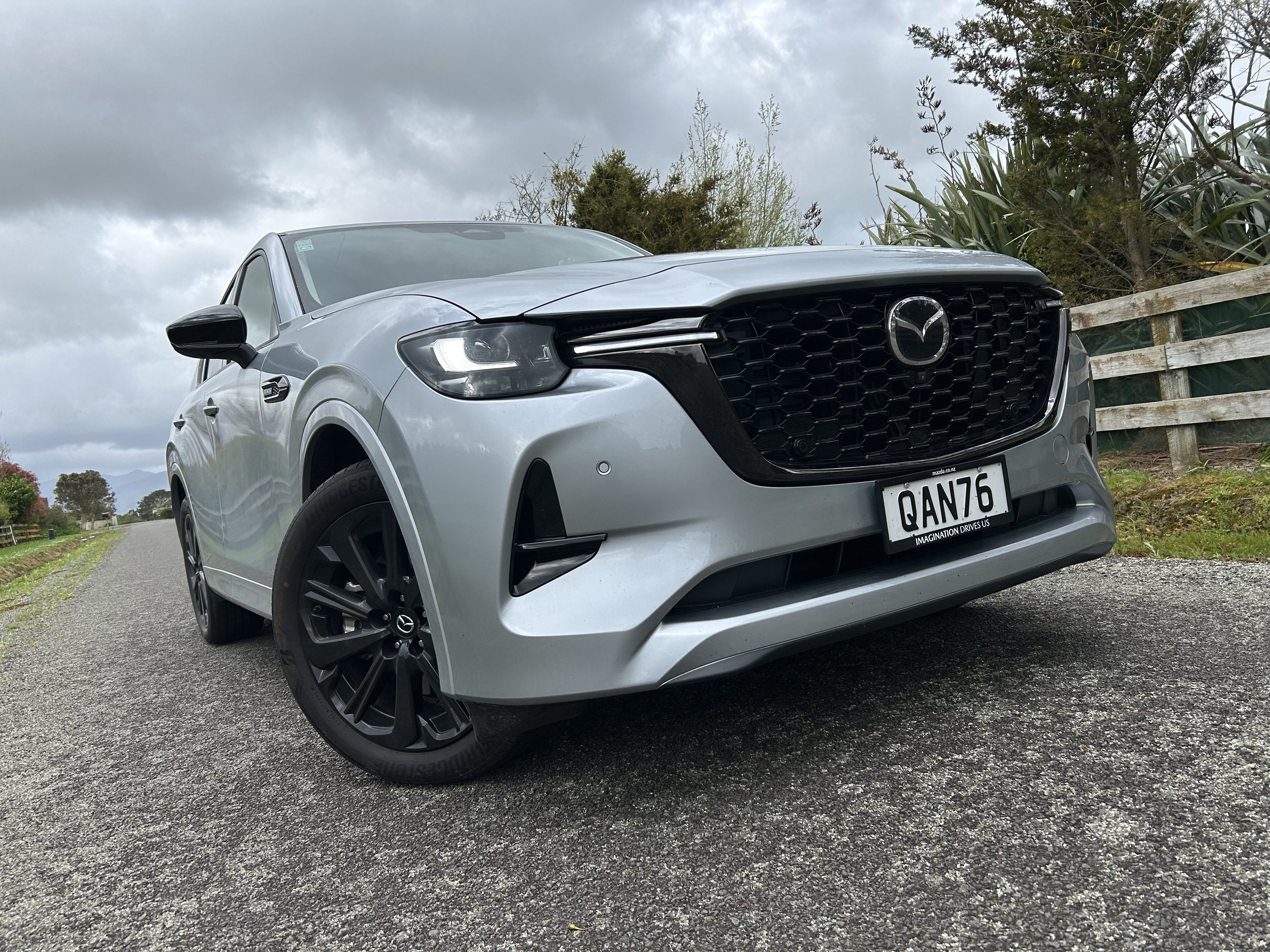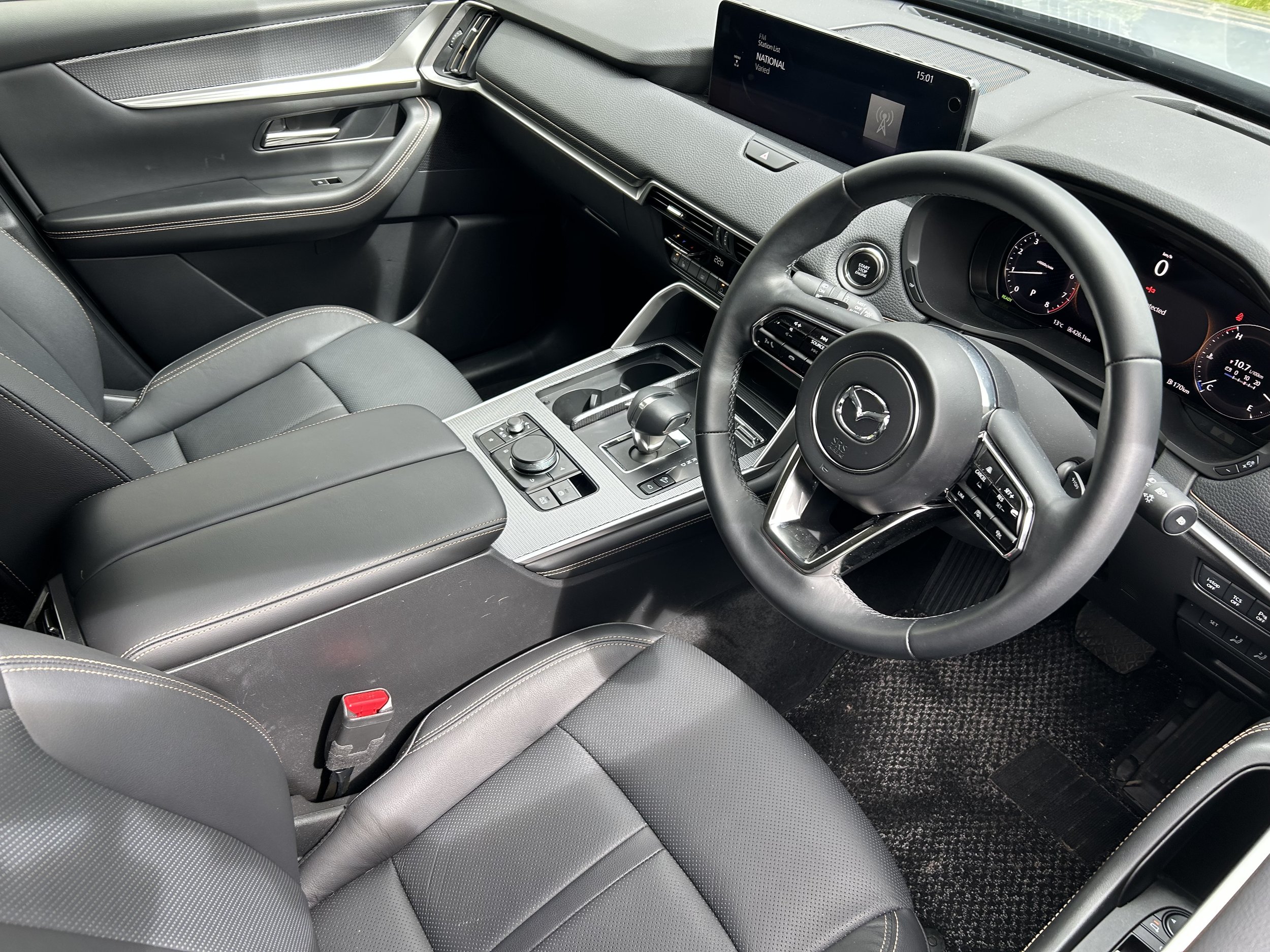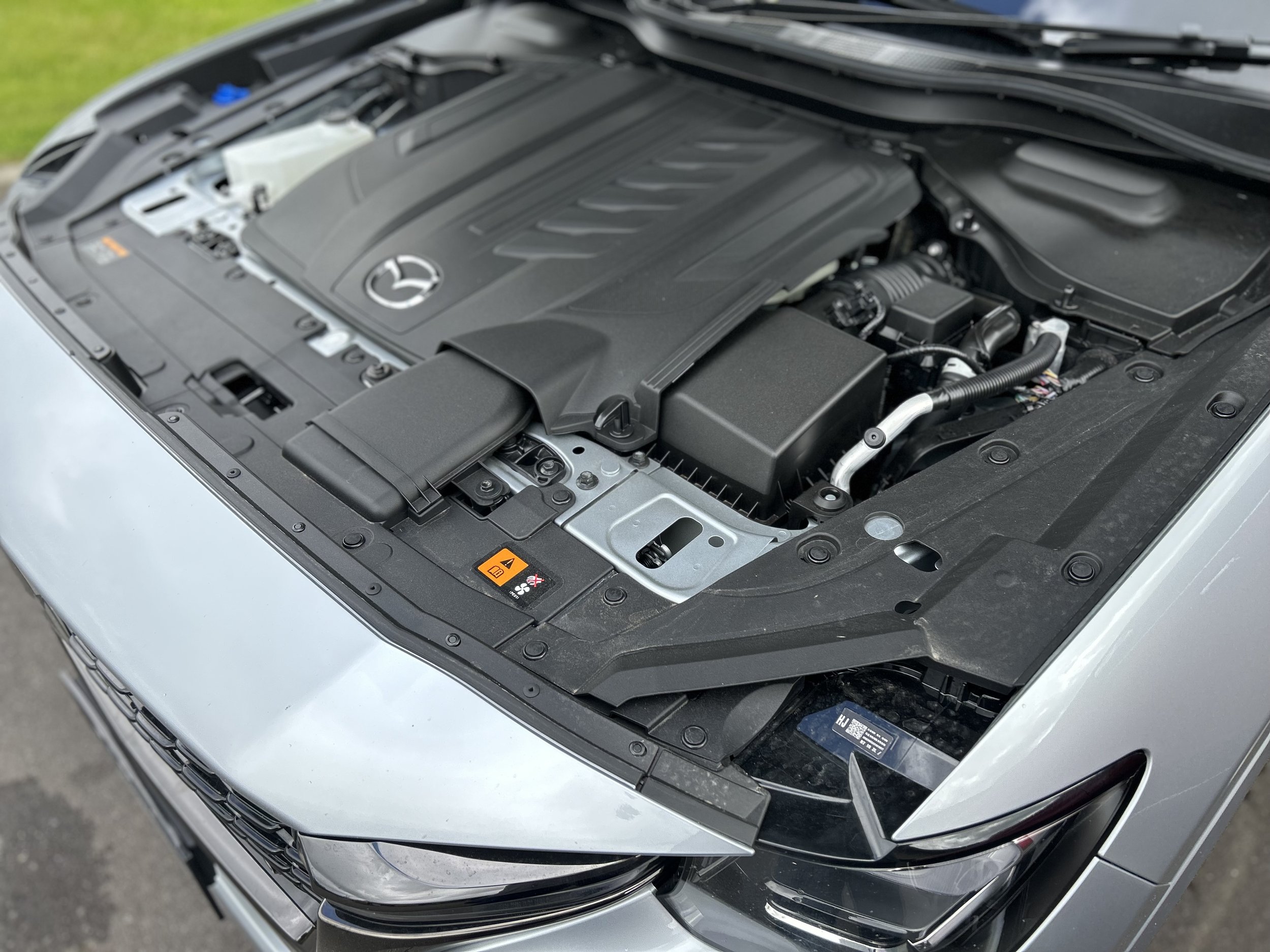Mazda CX-60 Homura 3.3-litre roadtest review: Hit for six … but how many are game to play?
/This luxury SUV is a bold call it is own right. Is Hiroshima coming in through the ‘out’ door with this power plant?
Price: $81,990.
Powertrain and economy: 3283cc turbocharged inline six-cylinder petrol with 48 volt assist, 209kW/450Nm; eight-speed automatic; all-wheel-drive, 8.2L/100km.
Vital statistics: 470mm long, 1688mm high, 1890mm wide, 2870mm wheelbase, 18-inch wheels.
We like: Upscale elements; quality platform; good ride; superb build quality.
Not so much: Big engine, big personality isn’t big any more. Logic erodes when there’s that smarter PHEV option.
ECCENTRIC, eclectic…. nicely weird, oddball niche.
The automotive industry’s history is littered with outliers; motoring would be much duller without those who’ve dared to be different.
Mazda has done well with vehicles that conform to common sensibilities. But, arguably, it has done better - in respect to making a name for itself - with those that step beyond the boundaries. Sometimes slightly, sometimes by a lot.
Where this particular CX-60 Homura places is going to spark debate, simply because it runs a 3.3-litre inline six-cylinder petrol.
The motoring world still brings us large cars. Which the CX-60 is. The obvious question: Do we still have a tastes for large capacity engines? If so, then Mazda has the sector pretty much to itself. Most brands, after all, are not only downsizing combustion choices, but looking to divest them for electric. Even the luminaries that could conceivably afford to buck the trend, such as the supercar specialists, have accepted the inevitable.
For Mazda to introduce this mill, even though it has 48 volt assist, is in itself brave. That this is a brand-new powerplant, rather than something used in the past and dusted off for another go, is …. well, either straight out lunatic or madly genius.
Mazda has been long used to walking the tightrope and getting away with it. Yet, as risks go, this is surely akin to taking on a Niagara Falls crossing on a windy, wet day while not only blindfolded but with an elephant hung off each end of the pole.
Sure, with CX-60, they have a Plan B, in the form of a 2.5-litre turbo-four with plug-in hybrid tech. That engine is being positioned as the lead choice, across several grades, one of which is cheaper than this version of Homura. However, Mazda is also resolute in its opinion that combustion engines, in conjunction with e-fuels, still have a part to play in the future.
But why a six? For the same reason the platform it inserts into exists. Mazda, perhaps more obviously in its most important export market - North America - than here, has been pushing hard in recent years to become more upmarket.
Premium brands - and Lexus, BMW and Mercedes Benz were notably in Hiroshima’s sights - either still have, or have had, inline-sixes in their lineups. They’re also keen on rear wheel and, as it occurs here, all-wheel-drive. Accordingly, so is this Mazda.
Those elements have literally shaped the long-nose, cab forward look here. Rear-drive longitudinal demands room, simple as that. The engine bay is fully filled; what room isn’t taken by the powerplant is given over to the control-arm front suspension. Struts are more common but Hiroshima was chasing agility and crisper handling. Again, all to express premium excellence.
So much effort; does it pay off? In many ways, yes. The car handles well, with greater dexterity than many like-sized SUVs, and it is as refined as it is rapid. Mazda’s claim of their six being as smooth and as silky as Germany’s best is absolutely bang on.
There is another reality to cope with, of course.
On picking up the car, I immediately embarked on a 300km open road drive which lent surprisingly decent thrift; 7.7 litres per 100km on the outward leg, dropping to 7.1 for the return. The car was run without passengers, in fair conditions.
Thereafter, it mainly drove in a mix of urban and open road operability. In that scenario, an average of 11.5L/100km. Mainly with no more than two adult occupants. All that suggests open road cruising is its sweet spot. It seems to be the time when the 48 volt mild-hybrid system is most active.
On my drive, on any kind of descent - even a mild gradient - at a steady 100kmh the tachometer would occasionally fall to zero as the car went to its battery resource to coast. It’s only a temporary relaxation, and on my test didn’t occur with huge frequency, so all in all a bit of a token gesture, but better than nothing, I suppose.
The sense of the six being a very strong engine is undeniable. It has an easy muscularity about it; very akin to some of BMW’s sixes, with strong pull from low down, so it’s curious it has the same 2500kg towing capacity as the PHEV.
There’s also quality to how it sounds. That is, when it can be heard. Really, that’s only when it’s under firm acceleration, when something of a deep semi-baritone emerges. Otherwise, it’s a quiet one.
So if you like and can make practical use of all that, and don’t mind the fuel bill or the CO2 penalty it delivers at purchase, then there’s a chance. But, fundamentally, as much as it is a good example of its kind, it didn’t sway opinion that those other makes who have been there, done that and moved on from this size of engine were acting improperly.
At 170mm longer and 45mm wider, the CX-60 make for a more dominant presence than the CX-5, but full realisation of how much bigger it is only hits when they are side-by-side. Styling-wise, it’s clearly from the same family. Some say its height and lack of substantial ground clearance leave it looking a bit slab-sided; I’d suggest you’d want to pick your paint hues wisely. The 20-inch black alloy wheels, black grille and door mirrors are appealing finishing touches, but there’ll be argument among golf club members as to whether or not it has quite the same aura of one upmanship they see in their Lexus NX, BMW X3 and Audi Q5 choices.
If the styling doesn’t shake their martinis, the build quality of the CX-60's cabin might. The Homura grade lays on leather upholstery, including across the dashboard, and metallic inlays and door inserts of very high standard. This car competes in a category in which a certain other talks about how its cars are tended to by ‘master craftsmen’. All I can say is that those folk must been moonlighting for Mazda. The look, feel and quality of its materials match what you would find from other elite brands.
Maybe it’s a shame that the control layout is somewhat conventional and sensible, and a bit too much like those in the other Mazda SUVs which are supposedly more mainstream. Some push buttons being slotted onto a panel ahead of your right knee, so pretty much out of sight during doing, is also a bit curious.
I do like, nonetheless, that there are plenty of physical buttons for the things you'll want to adjust more frequently. The infotainment system has superb Android and Apple connectivity, but you keep having to remind yourself everything about the screen’s operation, even when it’s in those phone modes, is not set up for any level of touch operation outside of when the car is in Park and with the handbrake applied. Otherwise every action has to operate through that dial, which is faff, frankly, and somehow seems low-rent for the spend.
It is nonetheless worth working that dial to explore one specific operability. Mazda has long favoured Bose as its sound system supplier and the one with Homura is stunningly good. All the more so when you go into the sub-menu and adapt the ‘centerpoint’ and ‘AudioPilot’ settings to your liking; the latter very effectively combats road noise intrusions.
As a five-seater, it is almost under-utilised. You can see why Mazda intends to create a seven-seat CX-80 ror North America. There’s room for a third row.
As is, all seating positions are good for space, rear seat occupants won’t quibble for lower legroom, though large shoe-wearers might find the front seat rails slightly impinge on foot space. The middle of the rear seat lacks the same comfort as the two outer seats, but an adult can still fit in. There is also a generously-sized boot that can hold up to 570 litres, rising to 1726 litres when the rear seats are folded down.
It has a solid and assuring driving feel; this is not a car easily upset by road imperfections or natural climatic conditions; one day included heavy rain and crosswinds and it coped with with complete composure. The driving position is excellent and the seat design very good. The functionality that assists in setting the perfect driving position seems like a gimmick, but really isn’t. What does seems to be important, though, is knowing your exact height to input. It’s that precise.
Is that enough? This whole premium push is an intrigue; is CX-60 sufficiently different to other established choices in the family, other than in size?
Mazda design is terrific, yet even though this new SUV has some additional styling bling, from my experience, it seems set to risk being visually confused with the less-pricey, CX-5; also upmarket but ultimately less posh. Are you okay with that?
Mazda design is Mazda design, too, when it comes to the interior. Spec-wise? Well, Mazdas are rarely poorly kitted; the SUVs have always provisioned strongly. Beyond the five star sound system, clever biometric kit and a higher quality of trim, what additional extras does the CX-60 provide in Homura fit out?
Mazda simply determining itself to be a premium player doesn’t necessarily mean consumers will readily invest in that ideal. It’s always been easier for a prestige brand to create more mainstream product than it ever is for a brand that starts from a lower base to build up its image. With the gilded makes, impression will always be that least pricey fare has the same DNA as the most expensive offerings. How much advantage comes from a reverse logic? That’s why Toyota created Lexus. Mazda has played this game before. With Eunos, Xedos, Enfini … Amati.
Eccentric, eclectic…. nicely weird, oddball niche.
Coin toss cars and powertrains. We all know of the late 1980s’ sports car proposition for which every major market that saw it in concept predicted failure. Fat chance. The MX-5 won over the world. Spectacularly.
But there are others, of course, that weren’t so lucky. One being a past luxury pitch not wholly dissimilar to this one in luxury-focused concept to what’s on test here. Bunging a rotary into a large Australian luxury sedan was truly bold. The Roadpacer’s rarity value, now, is entirely due to its poor reception back in the 1970s: When production ceased after two desultory years, just 800 were created.
I’m not saying the CX-60 is destined to be the modern equivalent of that folly, but it clearly isn’t a surefire home run achiever, either, not least when consumers for this car have the luxury of choice.
Going to a CX-60 Homura with the PHEV rather than this six means spending another $6k. That might demand some thinking about. Yet that powertrain is also available in the Touring for $78,990, which attracts - but be quick - a $4025 rebate. So, $74,965 while Clean Car incentive still avails. Touring spec is less grand than Homura, but it’s still very appealing.
The electric-assisted four having better power and torque and being less fuel hungry and more environmentally sound lends conclusion that, if future-proofing and residuals are in your mind, there’s a certain inevitability as to which powertrain will drive Mazda’s aspirations with CX-60.
I’d suggest it’s the one more attuned to looking forward than back.

